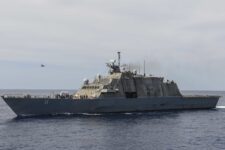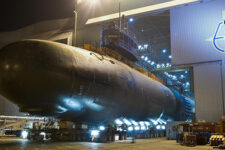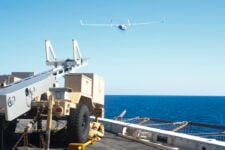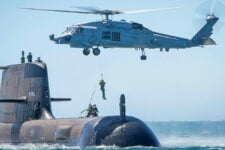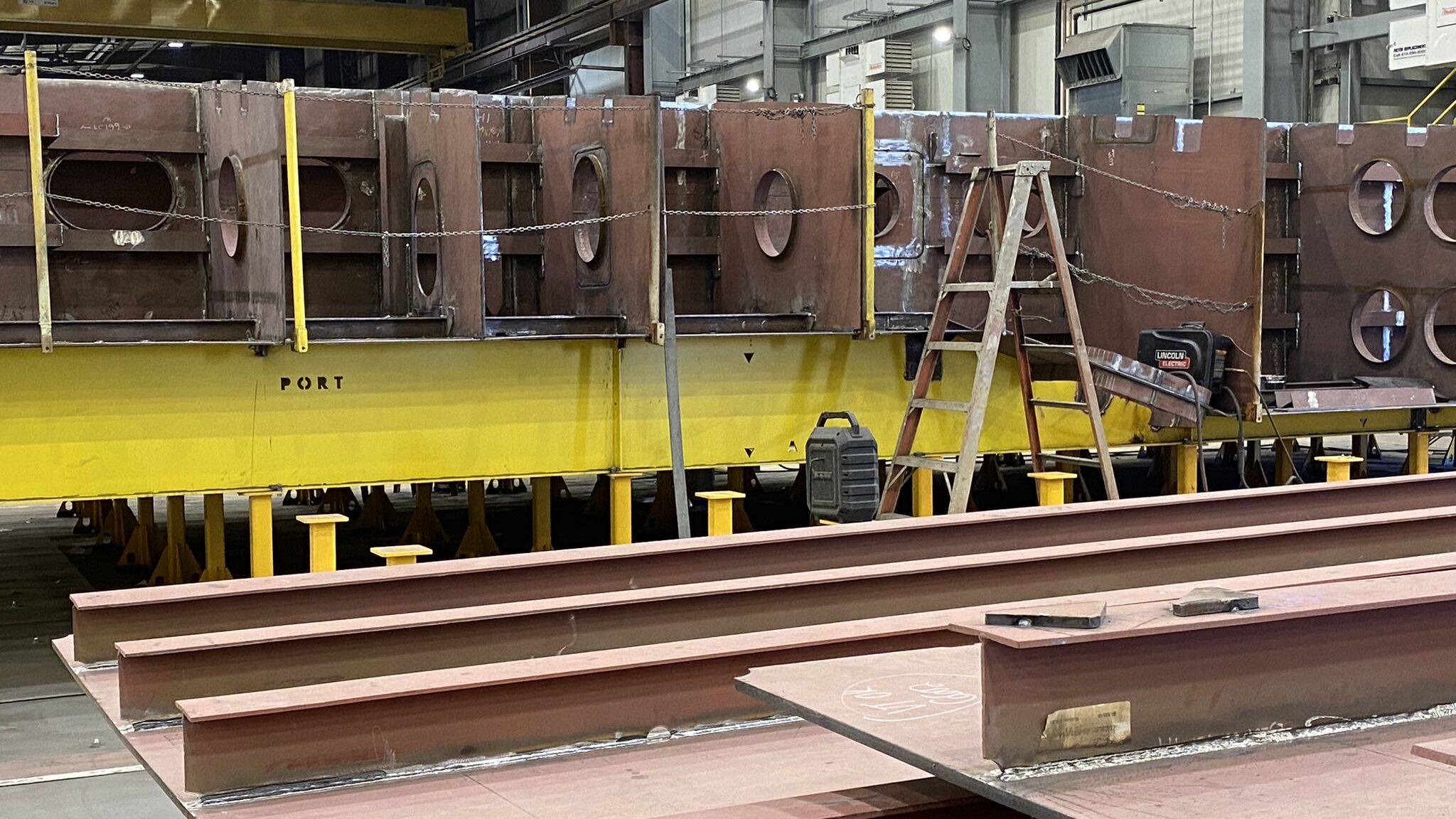
The first pieces of the USS Constellation (FFG-62) begin to take shape at Fincantieri Marinette Marine. (Justin Katz/Breaking Defense)
WASHINGTON — House lawmakers are moving to force the US Navy to complete its ships’ designs “100 percent” prior to lead vessel construction due to years-long “continued frustration” with the service advancing programs before they were ready for “prime time,” according to a senior member.
“Complete design was actually in the law back in 2020, and we’ve seen instances where … things have gotten sort of thrown off course because of the fact that there was just premature construction,” Rep. Joe Courtney, D-Conn., a senior member of the House Armed Services Committee, told a group of reporters today. “The real change in statute that was included in this measure was to try and just make sure that we’re not seeing these kinds of stop-start situations.”
A House aide familiar with the underlying statutes told Breaking Defense that there is no meaningful difference between a “complete design” and a design that is “100 percent complete.” Rather, Courtney’s amendment is necessary to preempt how the Pentagon has at times interpreted the phrase “complete design.”
The House panel on Wednesday passed out of committee, 57-1, its draft of the next defense policy bill with a budgetary topline of $883 billion, abiding by the budget caps set in the Fiscal Responsibility Act of 2023.
The move to insert the policy language regarding ship design completion came from an amendment offered by Courtney during the committee’s all-day mark up hearing. Notably, the amendment was filed and passed as part of an en bloc package, meaning members on both sides of the political aisle had already agreed to its inclusion beforehand.
The policy change will ultimately have to win approval from the full House and Senate before it can be passed into law.
Completing a ship’s design in its entirety prior to lead ship construction is virtually unheard of in Navy shipbuilding. Indeed, in the months leading up to the start of construction for the first Columbia-class ballistic missile submarine, service officials flaunted as an accomplishment the fact that the sub’s design was 83 percent complete.
Courtney pointed to the Littoral Combat Ship as the “poster child” of how a ship’s design being incomplete can lead to cost overruns and scheduling delays.
The LCS was a “situation where they just had never come down and settled on either design. … That’s been haunting the Navy ever since,” he said. The ensuing problems have been “one of the most painful experiences I’ve had on [this committee] over the years.”
He also noted the hold up in construction of the Constellation-class frigate. The service has come under fire from lawmakers for that ship’s delays specifically because of numerous changes made to ship relative to the initial offering from prime contractor Fincantieri Marinette Marine.
Adding salt to the proverbial wound is the fact that Navy officials prior to Constellation’s initial contract award repeatedly touted how requiring shipbuilders to make use of a “parent design” — deriving their proposals from a ship that has already been built and tested — will cut down on the risk of schedule delays.




